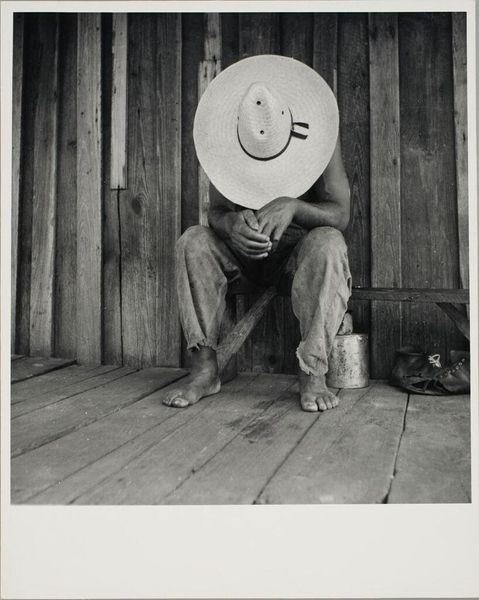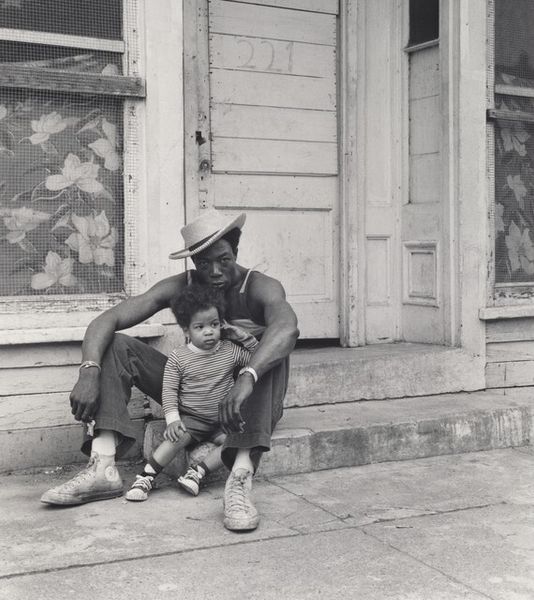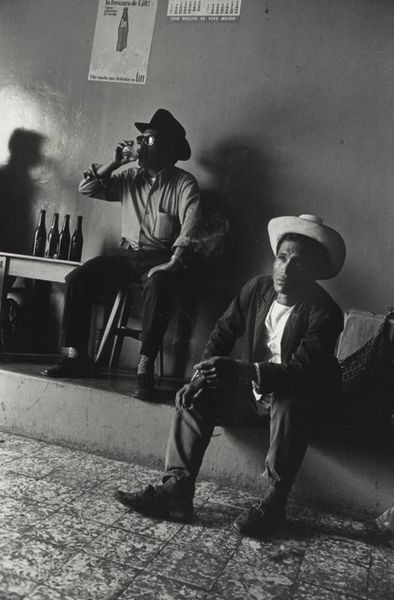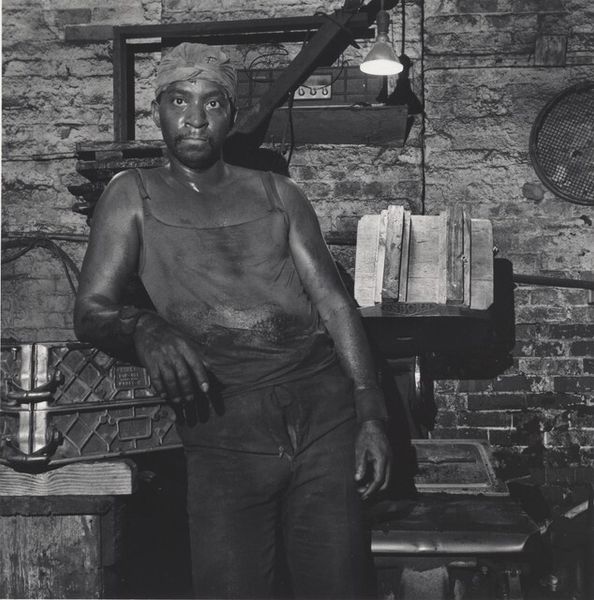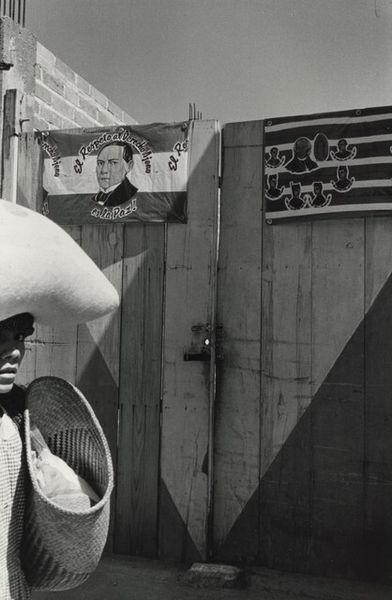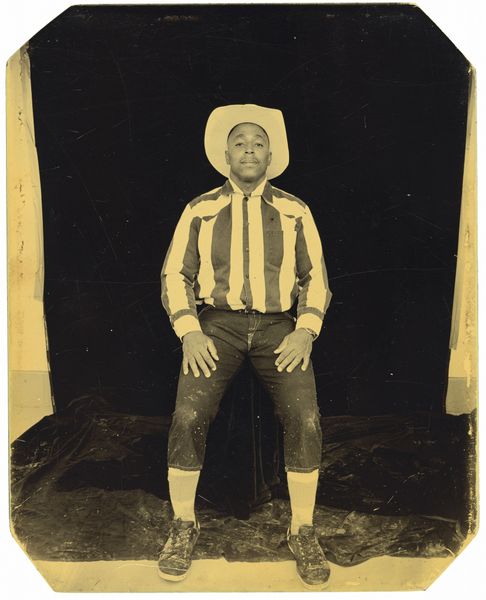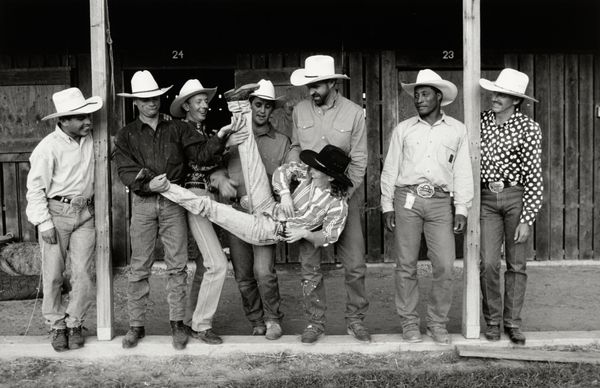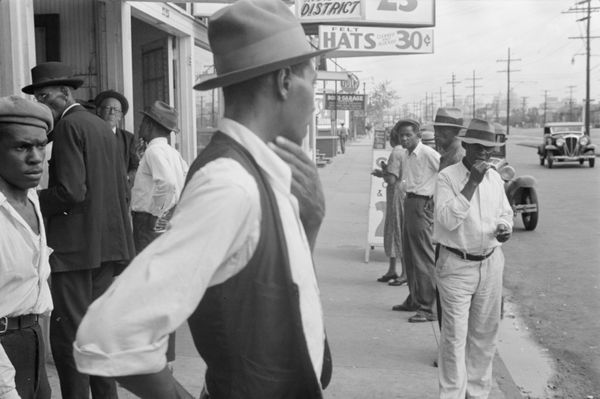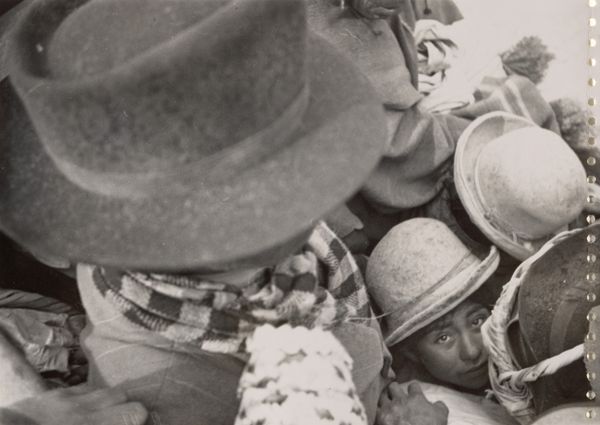
photography, gelatin-silver-print
#
social-realism
#
street-photography
#
photography
#
gelatin-silver-print
#
monochrome photography
#
street photography
#
realism
#
monochrome
Dimensions: image: 18.1 × 16.8 cm (7 1/8 × 6 5/8 in.) sheet: 25.2 × 20.3 cm (9 15/16 × 8 in.)
Copyright: National Gallery of Art: CC0 1.0
Editor: This is Milton Rogovin's "Toreador (Lower West Side series)" from 1973, a gelatin silver print. The man's confident pose is really striking, almost theatrical, and I’m curious about the story behind it. What do you see in this piece? Curator: I see a powerful interplay of self-fashioning and cultural coding. The toreador figure, traditionally linked to Spanish bullfighting, is recontextualized here. The man’s clothing choices - the hat, the boots, the bare chest – create a personal iconography. What meanings might he be drawing from, and perhaps challenging? Editor: So it’s more than just a portrait of someone in an outfit? What is the graffiti in the background suggesting to you? Curator: The graffiti layers another level of symbolism. These are the visual languages of the street – territorial markers, declarations of identity. In that sense, it functions as a visual echo of his own performance. They both communicate assertions of self. Editor: That's interesting. It sounds like the subject is very intentionally creating an identity or persona. I can really see that in how strongly he's looking into the camera. Curator: Precisely. He is not just being photographed; he is presenting an image of himself. The open chest and medallion referencing royalty challenge historical ideals, replacing it with new cultural memory. It forces the question of the relationship of those historical concepts with race and class in the seventies. Does the traditional concept of “Toreador” take on additional cultural weight by appearing on the Lower West Side? Editor: I hadn’t thought about the cultural weight that the location adds. It's really interesting to consider the way that images change when you place them into new locations, even decades later. Curator: Yes, context is paramount to interpretation. I think by re-contextualizing recognizable tropes, Rogovin encourages us to investigate layers of symbolism, history, and self-expression. It goes to show how an image can become a powerful articulation of identity and cultural commentary.
Comments
No comments
Be the first to comment and join the conversation on the ultimate creative platform.
